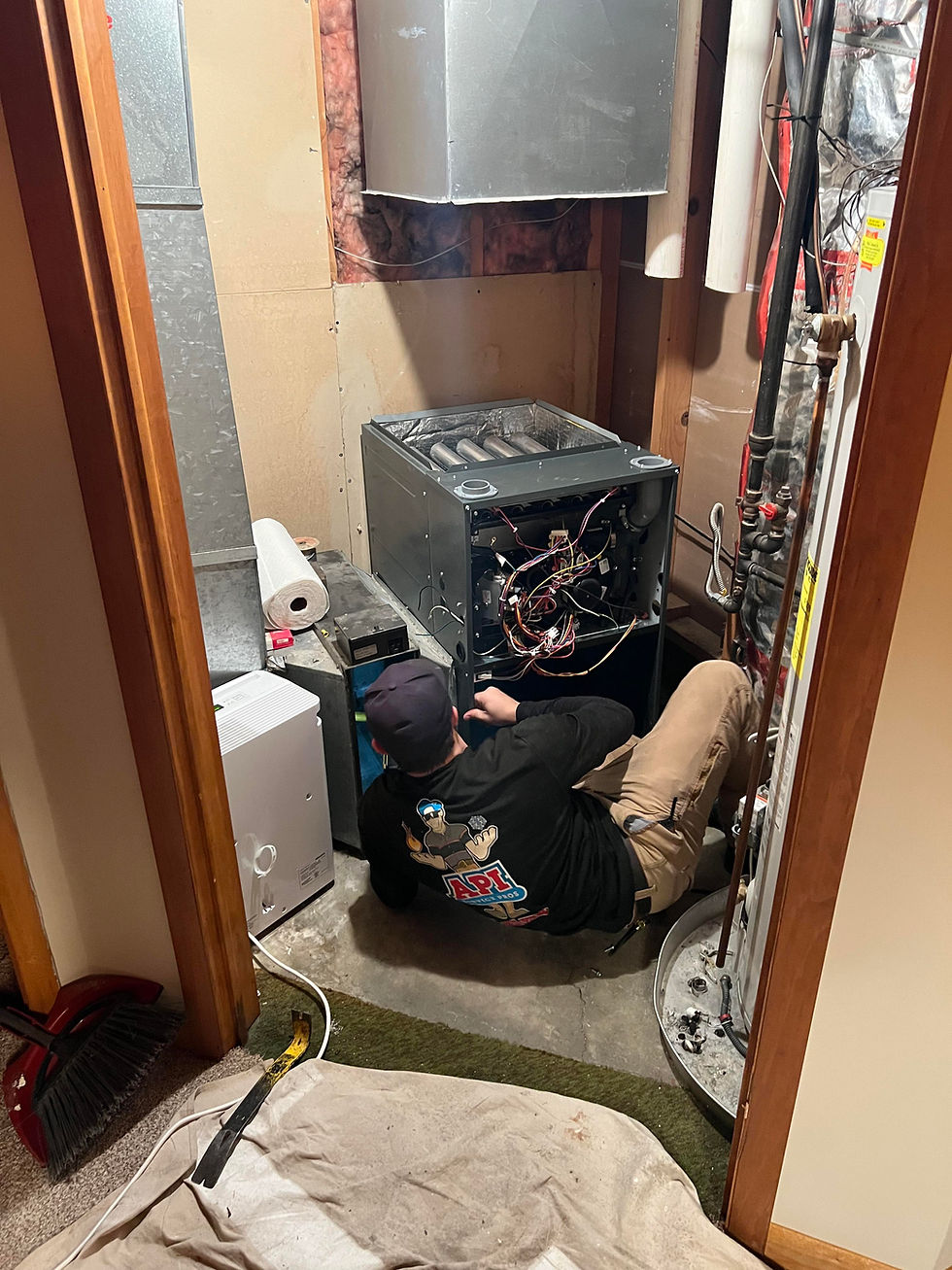Debunking the Myth: Do Ceiling Fans Actually Cool Your Home?
- API Service Pros

- Feb 28, 2024
- 2 min read
Ceiling fans are a ubiquitous feature in homes around the world, often lauded for their ability to provide relief during hot summer months. But amidst the sweltering heat, homeowners may wonder: do ceiling fans truly cool your home, or are they simply circulating air? In this blog post, we'll uncover the truth behind the cooling capabilities of ceiling fans and explore how they can contribute to a more comfortable indoor environment.

Understanding How Ceiling Fans Work:
Before delving into whether ceiling fans cool your home, it's essential to understand their functionality. Unlike air conditioning units, which actively lower the temperature of the air, ceiling fans operate by creating airflow. The movement of air generated by a ceiling fan creates a wind-chill effect, which can make occupants feel cooler by enhancing the evaporation of perspiration from their skin.
Enhancing Comfort through Air Circulation:
While ceiling fans do not lower the temperature of the air in the same way as air conditioners, they play a vital role in enhancing comfort through air circulation. By moving air throughout a room, ceiling fans help to alleviate stagnant air pockets and distribute conditioned air more effectively. This can result in a more consistent temperature and reduced reliance on air conditioning, ultimately contributing to energy savings.
Supplementing Air Conditioning:
While ceiling fans alone may not be sufficient to cool a home during extreme heat, they can complement air conditioning systems to enhance their efficiency. By using ceiling fans in conjunction with air conditioning, homeowners can achieve a comfortable indoor environment while potentially reducing energy consumption and utility costs. Additionally, using ceiling fans allows homeowners to set their thermostats slightly higher, further increasing energy savings.
Choosing the Right Ceiling Fan:
Selecting the right ceiling fan for your home is crucial to maximize its cooling potential. Consider factors such as the size of the room, ceiling height, and desired airflow capacity when choosing a ceiling fan. Opt for a fan with adjustable speed settings and a reversible motor, allowing you to customize airflow based on your preferences and seasonal needs.
Maximizing Cooling Efficiency:
To maximize the cooling efficiency of your ceiling fan, ensure it is installed correctly and set to the appropriate speed for the room size. During warmer months, set the fan to rotate counterclockwise at a higher speed to create a cooling breeze. This will help to enhance the wind-chill effect and make occupants feel cooler without actually lowering the temperature of the air.
In conclusion, while ceiling fans do not actively cool the air in the same way as air conditioning units, they play a valuable role in enhancing comfort through air circulation. By promoting airflow and creating a wind-chill effect, ceiling fans can contribute to a more comfortable indoor environment while potentially reducing energy consumption and utility costs. So, the next time you're seeking relief from the heat, consider turning on your ceiling fan and harnessing its cooling benefits!





